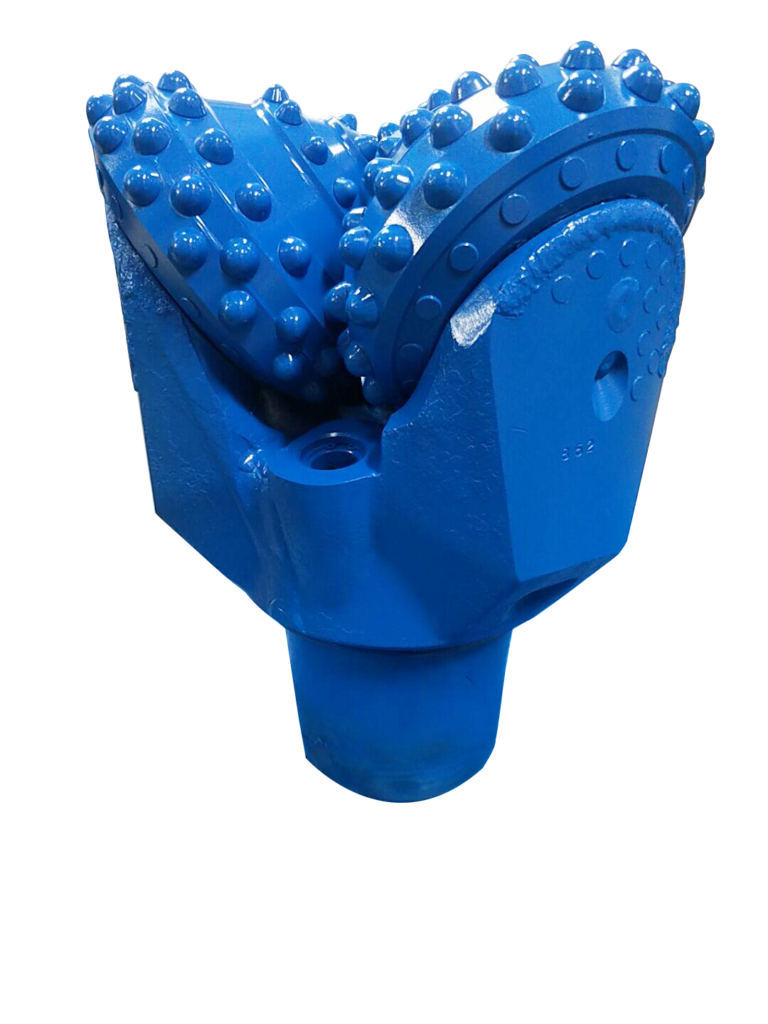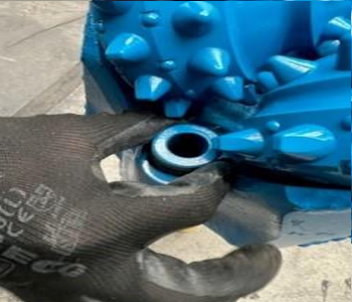Rotary Drilling Technical Summary
Rock Drilling Functional Parameters
Drilling involves a variety of factors and variables that affect the ease of penetrating different rock formations, commonly referred to as “drillability.” While rock hardness, measured by Unconfined Compressive Strength (UCS), is a key element, it is only one of several factors used to determine the best operational settings and bit selection for optimal performance.
Some other factors are: Shear strength, Internal angle of friction, Elasticity, and Fracture toughness.
All these variables should be considered when determining the best bit choice for optimum penetration and bit life.

Rotary Drilling Best Practice
The key to achieving optimal drilling performance lies in the Weight on Bit (WOB) and the rotation speed. Adequate WOB is crucial for effectively pressing the bit’s teeth into the rock, allowing for efficient breakage and is the primary factor in determining the penetration rate.
WOB - Weight on Bit
The amount of WOB applied depends on the rock’s Unconfined Compressive Strength (UCS); higher UCS rocks may require more time for proper fracture, often necessitating lower rotational speeds (RPM) to ensure efficient rock breakage.
Rotation Speed
Rotation moves the cutting teeth to the next position in the rock, and the faster the teeth are repositioned, the faster the drilling progresses. However, if the rock resists indentation by the teeth, minimal breakage occurs, and the rate of penetration won’t increase in proportion to higher rotational speeds. In softer rock, high RPM is effective since it responds well to frequency, while harder rock requires lower RPM, as it responds better to time for effective breakage.
Other Key Factors
Several key factors beyond rock characteristics influence drilling performance, many of which are related to the equipment used and the operator’s proficiency. Critical considerations include:
- Presence of subsurface fractures from blasting
- Condition and size of the drill sub and stabilizers
- Mechanical condition of the drill rig
- Size and straightness of drill pipes
- Drilling angle
- Efficiency of hole cleaning
- Driller’s experience and training
These factors, when optimized, work together to significantly enhance drilling efficiency and performance.
Rotary Drilling Air Requirements
Supplying air at the correct volume and pressure is critical for optimal bit performance. To ensure effective hole cleaning, a minimum bailing velocity of 5,000-7,000 feet per minute is recommended for dry cuttings, and 7,000-10,000 feet per minute for denser or wet cuttings. Adequate air volume helps efficiently remove cuttings from the bottom of the hole to the surface, while also minimizing wear on the cutting structure and bearings through proper hole cleaning.
This air volume calculation is typically based on standard bit and pipe sizes but should be increased for denser materials to maintain cleaning efficiency. The formula Q = A × V is used to calculate the necessary air flow (Q), where (V) is the desired velocity, and (A) is the area through which the air and cuttings pass, which is the hole area minus the area occupied by the drill pipe.


Tricone Bit Nozzle Selection
Internal air pressure in a rotary drill is regulated by nozzle size. By increasing the nozzle size pressure inside the bit is reduced. When the nozzle size is decreased the pressure increases. Nozzle selection is determined based on the overall drill rig setup and cutting characteristics.
Rotary Bit Breaking In Procedure
New bits should be gradually broken in by using reduced weight and slower rotation to ensure that all working surfaces are properly run-in and hardened before applying full operating loads.
This method helps extend the bit’s lifespan. Typically, for the first 10 minutes, apply 50% of the normal weight and rotation, followed by 75% for the next 10 minutes, before resuming normal drilling operations.
This step-by-step process ensures the bit is conditioned for maximum durability.
Rotary Drilling Problems and Solutions
Tricone overheating – Overheating bits could be an indication that an air passage is blocked, and the bearings are not being sufficiently cooled. The bit passages should be cleaned with water to remove any obstruction.
Inconsistent Air Pressure – Irregularities in the air system can be caused by two things, a blockage can cause an increase in pressure, a decrease in air pressure could be the result of a leak.
Cross Threading – When mating the rotary bit to the string, please ensure to use slow rotational speed so that it mates shoulder to shoulder.
Off Center Wear – Off center wear can be an indication that the drill rod is bent or the tricone bit is cross threaded.
Premature Teeth Wear – Inserts wear too fast, excessive weight on bit WOB or excessive RPM can cause Teeth to wear extremely fast. Reduce WOB and RPM to find the right balance.
Bearing Issues – Bearing issues may be causes by blockages in the air passages, incorrect storage procedure, and incorrect breaking in technique.

